The Day After
By Abdur Rauf Yousafzai | Newsbeat National | Published 6 years ago
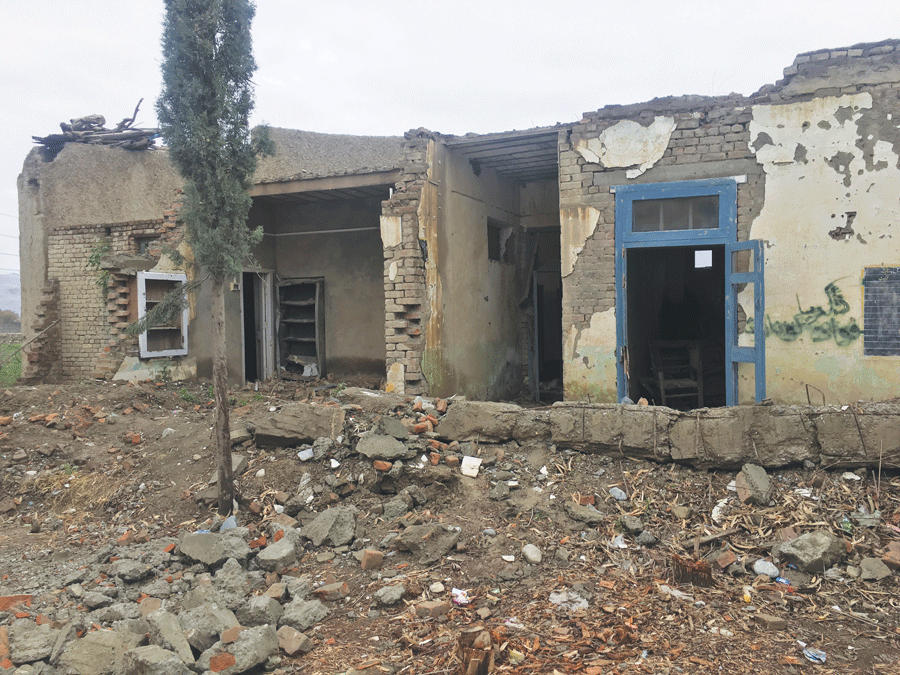
Renowned for being the centuries-old trade route with Afghanistan, during the Cold War it morphed into what was essentially a military hardware supply route, with the mujahideen fighting the Soviet occupation calling it a ‘golden gate to heaven.’ Post the USSR withdrawal from Afghanistan, the area became a sanctuary for foreign militants.
Norak village, located in the North Waziristan agency, lies along the principal road leading to Miranshah, the agency’s headquarters, and stretches to the Ghulam Khan border with Afghanistan’s Khost province.
During the Tehreek-e-Taliban Pakistan (TTP)’s seizure of the agency, the area, and particularly the five to seven kilometres of road that runs through it, became the hub of crime, with ambushes against security forces and the abduction and murder of civilians becoming rampant. Most often targeted by the militants were those thought to be anti-Taliban or progressive people.
In those days, as the double cabin four-by-fours — the public transport used in the area — plied the road, their occupants sat on their seats in mortal terror of the dangers that lurked. “It was a daily ritual for the inhabitants of the village who used the public transport — from the driver to the last passenger on the vehicle — to recite Quranic verses to protect themselves,” disclosed Jamal Dawar, a resident of the area. He recalled that time as the worst of his life. “Hundreds of people were abducted for ransom, or slaughtered for non-payment at that time,” Dawar added, saying that the purpose of such brutal acts was to make loud and clear to the local population that the TTP meant business.
North Waziristan stretches over 4,447 km, most of it bordering Afghanistan, and apart from its own indigenous residents, it has provided shelter to over a million Internally Displaced Persons (IDPs), who were uprooted during the military operation in the Federally Administered Tribal Areas (FATA). According to the latest census, conducted last year, there are still 750,000 IDPs living in the area.
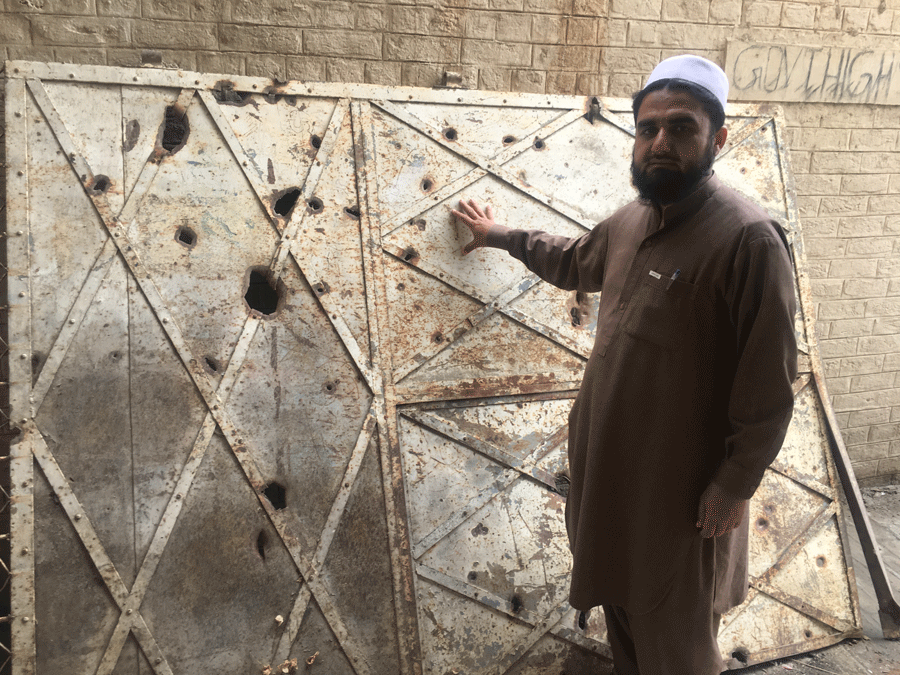
On my way to North Waziristan, I see dozens of tribal people gathered in the old Bannu Railway Station. Officially the station is in the use of the local administration but it has, to all intents and purposes, been given to the pro-government tribal Malliks to hold their jirgas there when they choose.
It makes for an interesting spectacle: elders with big turbans negotiate disputes of various natures while sitting in a disciplinary and compulsory circle. The Pakistani judiciary is clearly not popular here. Although these displaced tribals are now living under the constitutional hierarchy in the southern district of Khyber Pakhtunkhwa (KP), they clearly still prefer the centuries-old speedy system of jirgas to Pakistan’s questionable justice system.
As our vehicle plies its way on the road from Bannu, hundreds of green-roofed tents housing the IDPS at the Bakakhel Camp, a few yards away from the local police station, become visible.
When the security forces arrived at the agency to launch Zarb-e-Azb, the residents of the area were shifted to this location which offers minimal facilities, and an entry checkpost was set up by the security forces at Saeed Gai village for those wanting to enter North Waziristan to register themselves. This procedure was time-consuming and tedious. Additionally, disclosed Ibrar Ali, a resident of Mir Ali, the behaviour towards the locals of the soldiers manning the post was often abusive and harsh.
Even today one can see more than five lines of men, and in a separate kiosk, women, queueing up at the Saeed Gai checkpost, awaiting their turn to register. After the entry process is complete, the army officer writes the name of the person looking to enter on a small piece of paper and signs it. “The local people call this the North Waziristan visa,” said Ali. He added that a few kilometres from the checkpost is a toll plaza where the visa is handed over to another army officer who gives travellers the final permission to enter North Waziristan.
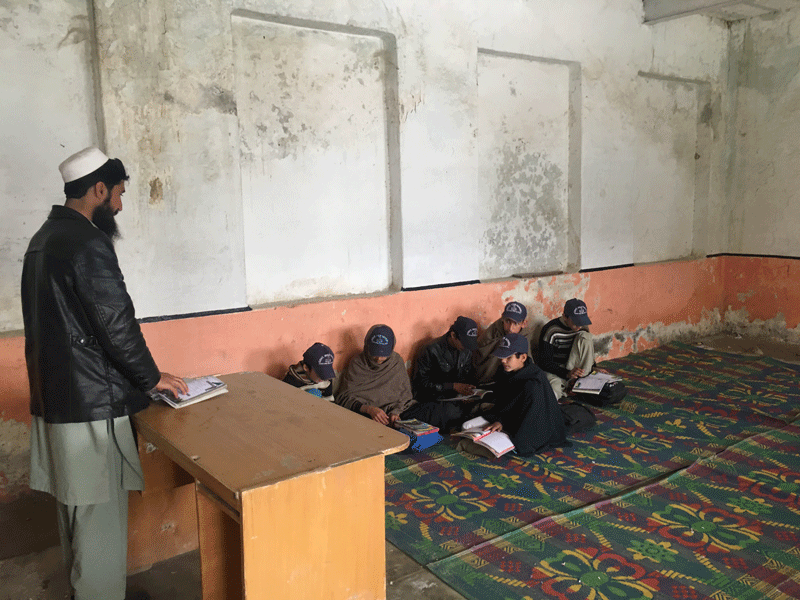
Since the rout of the TTP, the agency’s administration and security forces have imposed a complete ban on the setting up or opening of any religious seminaries or madrassahs in the agency. So residents use the mosque’s buildings to provide their offspring early religious education. The two popular seminaries that functioned in the area, the Nizami Idak and Norak Madrassah on the main road near Idak and Norak villages have, meanwhile, been converted by the local administration and security forces into an army checkpoint and modern school respectively. A local revealed the history of the seminaries on the condition of anonymity. “All the jihadi leaders, including Maulana Masood Azhar, chief of the banned Jaish-e-Mohammad, visited them a few times and Azhar particularly inspired the youth studying there through his powerful speeches.” He added, “there can be no denying that these religious seminaries encouraged the fundamentalist narrative in North Waziristan.”
The historical Miranshah and Mir Ali Bazaar in the area are two locales that escaped the wrath of the militants. Once a draw for the local population, even at the peak of militancy, not even a single brick was damaged in the structures here. However, said local politician Dawar, “there were more than 4,000 other shops doing good business in Mir Ali and about 7,000 in Miranshah before the military operation, but now few remain. I have sued the political administration in the Peshawar High Court for the owners of those shops.” Meanwhile, the markets are now in the process of being rebuilt. Pushcart vendors have already started doing business with the debris from the razed shops.
However, the ruined walls and bullet-riddled gate of Khaso Khel High School, abandoned during the rule of the militants, are graphic reminders for the political administration and the army construction organisation in the area, the Frontier Works Organisation (FWO), of the work that still needs to be done. Before the military operation, over 750 students were studying in the school. The school principal, Mir Musharraf said that after the repatriation of the IDPs from the towns and camps, that number dipped to 300.
Khaso Khel School was built before the partition of the subcontinent and many of its alumni today are contributing members of different sectors of the country’s workforce. During the military operation in the area, most of the educational institutions were ruined, schools were bombed — among them this historical institution. Today, of this school’s 13 rooms, only five are functional, teachers do not have offices to sit in, there are pools of stagnant water in the school’s garden, and the rest of the site is strewn with garbage, presenting an image of wanton destruction. “On rainy days, the students don’t attend school because the roof leaks, there is no drainage, and there are mounds of mud everywhere,” said Alamzeb Khan, a senior teacher at Khaso Khel.
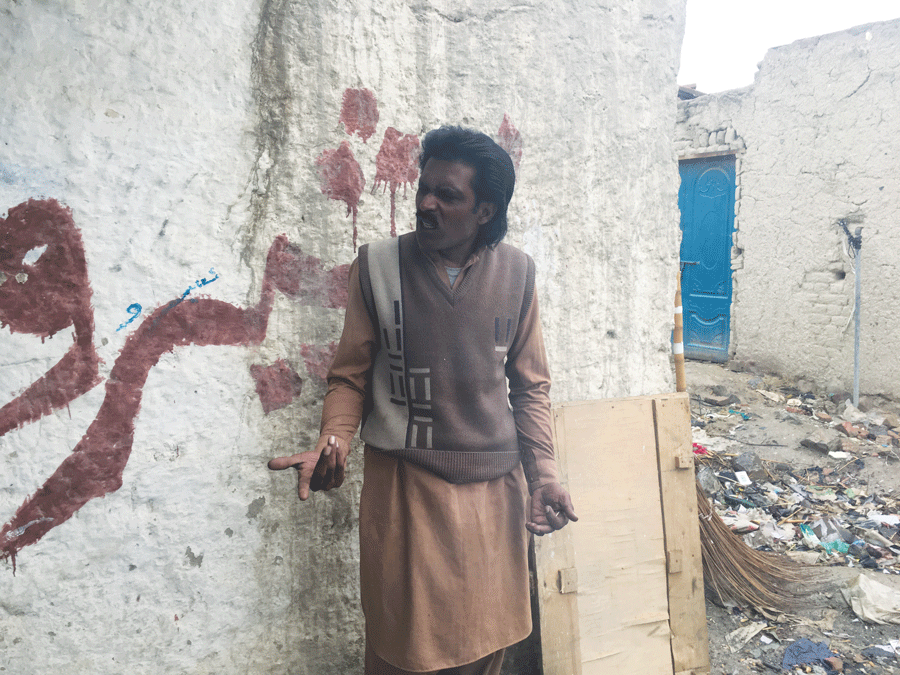
Nadeem Kumra
A student of grade 5, Abdul Rashid said he had wasted two precious years as an IDP in the Bakakhel Camp and there are many others in the same situation. With little hope of change anytime soon, many of Rashid’s classmates have abandoned their studies. Naseer Azam, for example, is working for Pashto television for which he has covered the time of militancy, the military operations and the IDPS issue. But he lamented, not everyone has been as fortunate. “A complete generation is illiterate. The war not only traumatised the inhabitants of North Waziristan, they have also lost what could have been good livelihoods if they had an education.”
According to Alamzeb Khan, “eight million rupees have been issued by the FATA Secretariat for the reconstruction of the Khaso Khel school, but no one knows where the money has gone.” Even worse, he disclosed, doors windows and instruments have been stolen from the laboratory and other rooms. Other teachers have demanded an external audit of the reconstruction and development projects in the area. After the military operation, they contended, the political administration as well as the armed forces should be made accountable to the citizens of the state.
However, sitting in his well-furnished office, the political agent of the area, Kamran Afridi, gave a briefing on the “revolutionary steps” that have been taken by his office to rectify the situation in the agency. “The services of two dozen ghost female teachers have been terminated. Currently, most of the 984 schools in North Waziristan are functional and reconstruction work is in progress in the remaining educational institutions,” said Afridi.
The political agent added that there had also been other successes. For example, he stated, in the health department. “Not a single polio case has surfaced in the area for the last two years. This is due to the hard work of the agency’s health department.”
Inside the Miranshah Cantonment of the North Waziristan Agency, several hundred minority members, comprising Christians and Hindus, live in a separate area called Civil Colony. When militancy ruled in the area, it was especially hard for them, but even today they continue to struggle to safeguard their rights and heritage. “We believe minorities are an integral part of the tribal Pashtun set-up,” maintained Khalid Iqbal, president of the minority communities group at the agency. “We have been living here since the time of the British and have adopted indigenous Pashtun culture in all aspects of our lives,” he said. But this does not always guarantee them security.
During TTP rule in the area, two men of the Christian community, Indras Masih and Gulfam Masih were abducted, but miraculously, the rest were unharmed. Indras Masih was released after a few weeks due to the efforts of local leaders, but Gulfam Masih never returned home. Gulfam’s young wife and daughter continue to wait for his safe recovery, but the North Waziristan administration still has no clue about his whereabouts.
While there are about 600 to 700 Christians living in Civil Colony, there is no church in the area. Kamran Afridi disclosed he had included a church and community centre for minorities in the next annual development programme. Now the Hindus of the area are also demanding a temple and a cremation ground. Currently they have to take their dead to Kohat for the last religious rites and cremation. This journey is difficult and expensive. “The trip costs up to 50,000 rupees. The Hindu community cannot afford such expenditure,” said Nadeem Kumra, a member of the community from the area.
There are other realities on the ground that could make development and peace in the agency hard to sustain. A rift and struggle for power is very visible between the political administration and the military officers in the area. Hitherto, the political agent was considered king and his word was law, but after the military intervention his power has been significantly curtailed by the more powerful military establishment. Some lower ranking officers shared how the ongoing battle of egos could prove dangerous. “Military officers consider themselves virtually divine creatures on earth, but the political agents are not much better, and this narcissism could lead to friendly fire at any time,” one of them predicted.
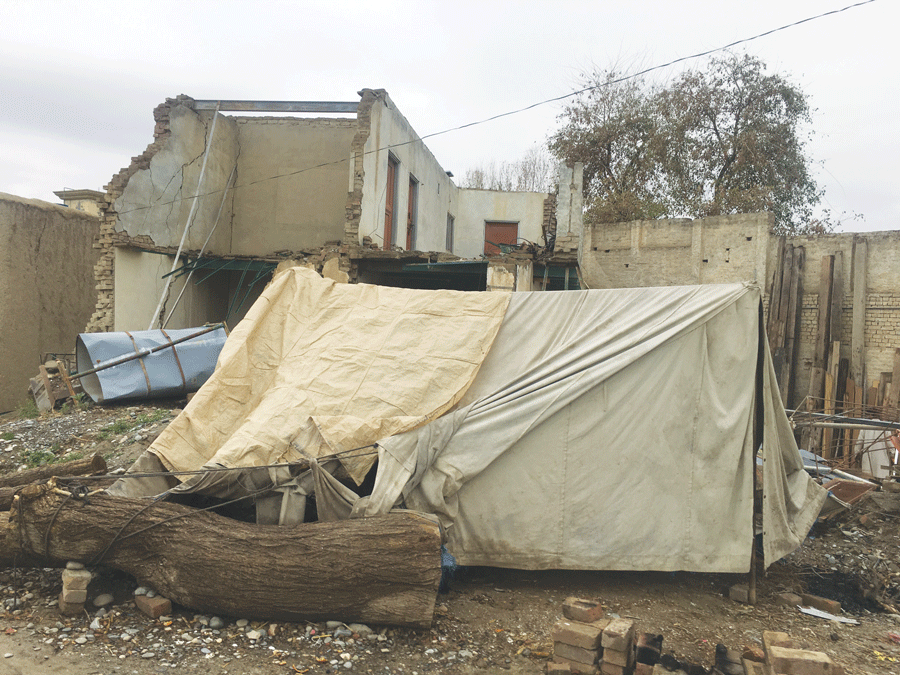
The road from Miranshah to the historical border of Ghulam Khan has recently been rebuilt. After crossing a few checkposts, a graveyard appears on the right hand side of this road. On March 9, after a barricade of a few months, the political administration opened the Ghulam Khan border for trade with Afghanistan — on a trial basis. This because trade between the two countries is dependent on relations between Kabul and Islamabad, which have been on a roller coaster for a while.
Beneath the paramilitary point at Ghulam Khan, a cemetery and mosque were established during the Soviet occupation of Afghanistan. Jihadi soldiers would plan their strategy against the Communist forces from this mosque. Pakistani intelligence officer Colonel Imam, who was later killed by TTP leader Hakimullah Mehsud, would plan combat strategy and assign the mujahideen their respective tasks. A local from the area, Azmat Wazir, said the graveyard contained not just the bodies of soldiers from different parts of Pakistan, Arab countries and other nations who helped fight the Soviets, but also of Russian soldiers who were felled in battle. Dr Faizullah Jan, Head of the Department of Journalism, Peshawar University, said that to have lasting peace in the Frontier — and indeed in Pakistan — the concept of ‘strategic depth’ should be eliminated from all our foreign relation strategies. “On the one hand it kills Pashtuns, and on the other hand it is pushing Pakistan into isolation,” he contended.
Local politician Mohsin Dawar criticised the role of the military and the civil establishment towards Pashtuns, and particularly towards the tribals. “Islamabad and Pindi-based policymakers have used Pashtun youth as war fuel,” Dawar maintained. “This policy should be abolished. The young blood of this area will no longer tolerate second-class treatment,” he warned.
And perhaps recent events are an indicator of just that. A Pashtun long march and then a ‘parlat’ (sit-in) in front of the Islamabad Press Club was recently initiated by university students from the Frontier. The gathering was later joined by political figures, particularly Pashtun nationalists. The purpose of the sit-in was to raise a voice against the forced disappearances of people, to demand an end to the ‘watan’ card, the removal of land mines in the area, and the immediate cessation of extra-judicial killings in the Pashtun belt.
The trigger for this movement, now known as the ‘Pashtun Tahafffuz Movement,’ was the fake encounter which took the life of Naqeebullah Mehsud in Karachi. An innocent man from Waziristan, all the strikingly good-looking Mehsud wanted was to be a star on social media and walk the ramp as a model. His death could prove the straw that broke the camel’s back.


